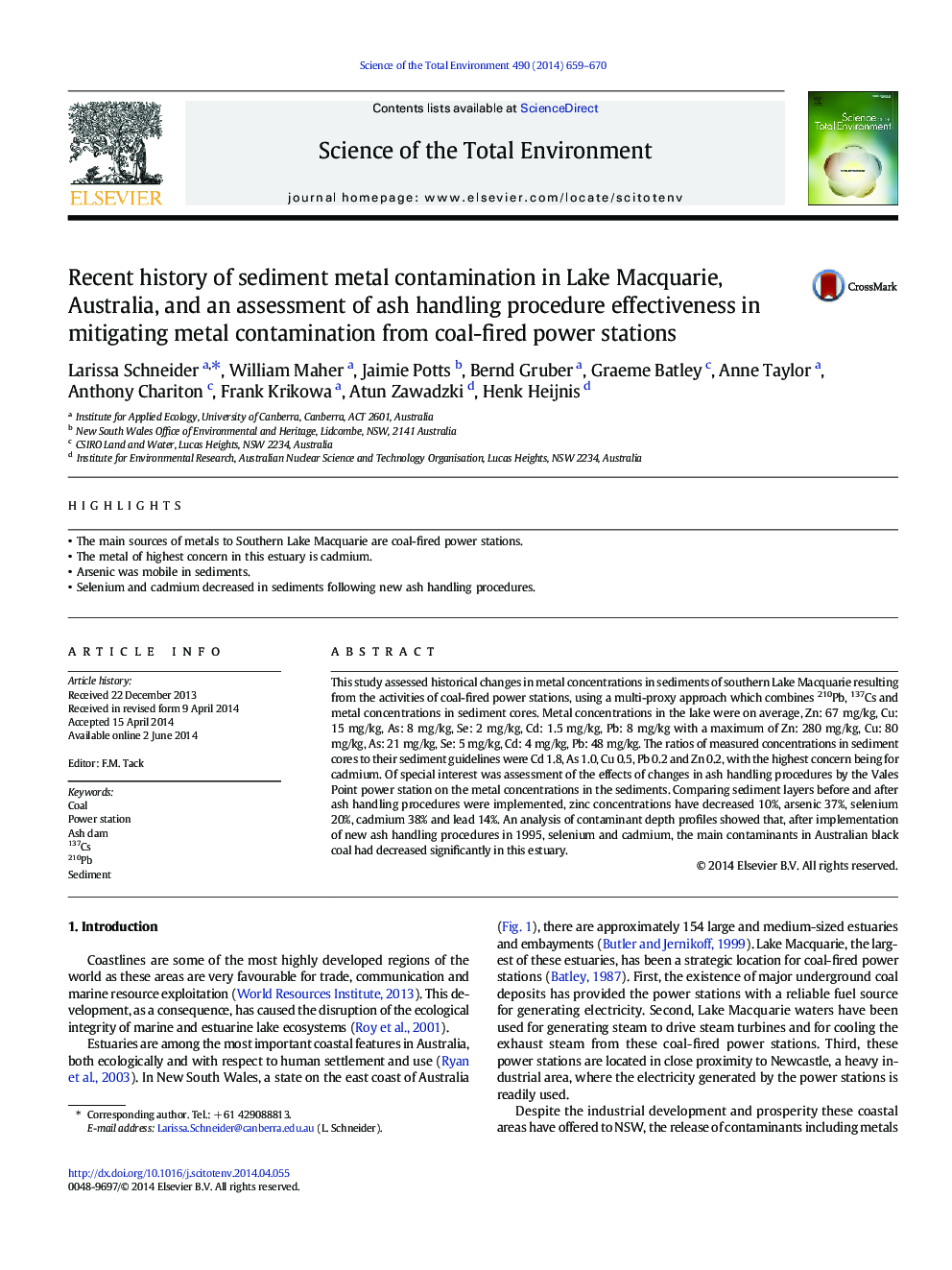| Article ID | Journal | Published Year | Pages | File Type |
|---|---|---|---|---|
| 6329206 | Science of The Total Environment | 2014 | 12 Pages |
â¢The main sources of metals to Southern Lake Macquarie are coal-fired power stations.â¢The metal of highest concern in this estuary is cadmium.â¢Arsenic was mobile in sediments.â¢Selenium and cadmium decreased in sediments following new ash handling procedures.
This study assessed historical changes in metal concentrations in sediments of southern Lake Macquarie resulting from the activities of coal-fired power stations, using a multi-proxy approach which combines 210Pb, 137Cs and metal concentrations in sediment cores. Metal concentrations in the lake were on average, Zn: 67Â mg/kg, Cu: 15Â mg/kg, As: 8Â mg/kg, Se: 2Â mg/kg, Cd: 1.5Â mg/kg, Pb: 8Â mg/kg with a maximum of Zn: 280 mg/kg, Cu: 80 mg/kg, As: 21 mg/kg, Se: 5 mg/kg, Cd: 4 mg/kg, Pb: 48 mg/kg. The ratios of measured concentrations in sediment cores to their sediment guidelines were Cd 1.8, As 1.0, Cu 0.5, Pb 0.2 and Zn 0.2, with the highest concern being for cadmium. Of special interest was assessment of the effects of changes in ash handling procedures by the Vales Point power station on the metal concentrations in the sediments. Comparing sediment layers before and after ash handling procedures were implemented, zinc concentrations have decreased 10%, arsenic 37%, selenium 20%, cadmium 38% and lead 14%. An analysis of contaminant depth profiles showed that, after implementation of new ash handling procedures in 1995, selenium and cadmium, the main contaminants in Australian black coal had decreased significantly in this estuary.
